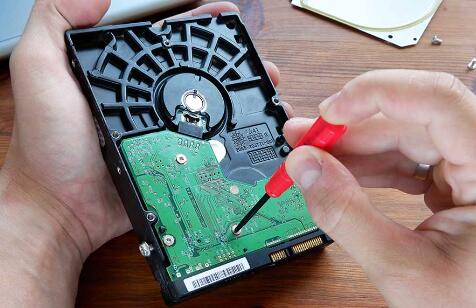The cost of data recovery in Australia can vary significantly depending on several factors, including the type of data loss, the complexity of the recovery process, and the service provider.
1. Data Recovery
Data recovery involves retrieving lost, corrupted, or inaccessible data from storage devices such as hard drives, solid-state drives (SSDs), memory cards, or USB flash drives. The process can range from simple file retrieval to complex procedures involving advanced technology and specialized equipment.
2. Factors Influencing Data Recovery Costs
a. Type of Data Loss:
Logical Failure: Occurs due to software issues, accidental deletion, or formatting errors. Generally, this type of recovery is less expensive as it involves less complex procedures.
Mechanical Failure: Involves physical damage to the storage device, such as a damaged hard drive platter or broken read/write heads. Recovery from mechanical failure is more expensive due to the need for specialized equipment and cleanroom environments.
Electronic Failure: Includes issues with the device’s circuit board. Recovery may require component-level repairs, which can be costly.
Severe Data Corruption: Complex cases of data corruption, often involving severe damage to the file system, can lead to higher costs due to the intensive recovery processes required.

b. Type of Storage Device:
Hard Drives (HDDs): Generally, recovery costs are lower compared to SSDs due to the more straightforward nature of the technology.
Solid-State Drives (SSDs): Recovery from SSDs can be more expensive due to their complex technology and the need for specialized tools.
RAID Arrays: Recovering data from RAID arrays (Redundant Array of Independent Disks) can be more expensive due to the complexity involved in reconstructing the data across multiple drives.
Memory Cards and USB Drives: Recovery costs for these devices are typically lower, but they can still vary based on the extent of the damage.
c. Recovery Complexity:
Simple Recovery: Involves basic file retrieval with minimal damage, often ranging from $300 to $600.
Intermediate Recovery: Involves more complex issues or multiple devices, with costs ranging from $600 to $1.500.
Advanced Recovery: For severe damage or intricate cases, the cost can exceed $1.500. potentially reaching $3.000 or more.
3. Typical Cost Ranges
**a. Logical Recovery:
Standard Hard Drives: $300 – $800
SSDs: $600 – $1.200
RAID Arrays: $1.000 – $3.000
**b. Mechanical or Electronic Failure:
Standard Hard Drives: $800 – $2.000
SSDs: $1.200 – $2.500
RAID Arrays: $2.000 – $5.000
**c. Severe Data Corruption:
Standard Hard Drives: $1.000 – $2.500
SSDs: $1.500 – $3.000
RAID Arrays: $3.000 – $6.000
4. Additional Costs
**a. Assessment Fees: Some data recovery services charge an initial assessment fee to evaluate the condition of the storage device and provide a cost estimate. This fee can range from $50 to $200 but may be waived if you proceed with the recovery service.
**b. Emergency Services: For urgent or emergency recovery needs, additional charges may apply. Emergency services can add $200 to $500 or more to the overall cost.
**c. Data Restoration: In some cases, there might be additional fees for restoring the recovered data to a new device or media. This cost is usually between $100 and $300.
5. Choosing a Data Recovery Service
When selecting a data recovery service, consider the following:
Reputation and Reviews: Look for providers with positive customer reviews and a solid reputation in the industry.
Certifications: Ensure the provider has the necessary certifications and qualifications, especially for handling complex recovery cases.
Service Guarantees: Some companies offer “no data, no fee” guarantees, meaning you only pay if the data is successfully recovered.
Experience and Expertise: Choose a provider with experience in handling the specific type of data loss and storage device you have.
6. Cost vs. Value
While the cost of data recovery can be significant, it’s important to weigh this against the value of the lost data. For critical or irreplaceable data, investing in professional recovery services may be worthwhile. Additionally, some companies offer payment plans or financing options to help manage the cost.
7. Prevention and Backup
To minimize the need for data recovery, consider implementing regular backup strategies. Regularly backing up data to an external drive or cloud storage can help avoid the high costs associated with data recovery services.
The cost of data recovery in Australia can vary widely based on the type of data loss, the storage device, and the complexity of the recovery process. By understanding these factors and choosing a reputable service provider, you can make an informed decision about the best approach for recovering your valuable data. Whether you’re dealing with a simple logical failure or a severe mechanical issue, there are options available to help you retrieve lost data and minimize the impact on your work or personal life.
About us and this blog
Panda Assistant is built on the latest data recovery algorithms, ensuring that no file is too damaged, too lost, or too corrupted to be recovered.
Request a free quote
We believe that data recovery shouldn’t be a daunting task. That’s why we’ve designed Panda Assistant to be as easy to use as it is powerful. With a few clicks, you can initiate a scan, preview recoverable files, and restore your data all within a matter of minutes.
Subscribe to our newsletter!
More from our blog
See all postsRecent Posts
- Best formatting for usb flash drive 2025-04-08
- Can’t format usb write protected 2025-04-08
- How to format usb stick on macbook? 2025-04-08

 Try lt Free
Try lt Free Recovery success rate of up to
Recovery success rate of up to









